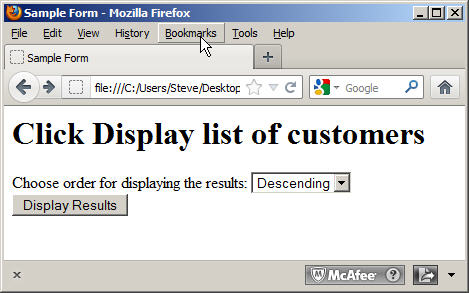Below is the full text of the acknowledgements from my book OCA Oracle Database SQL Expert Exam Guide (Exam 1Z0-047). It mentions a great many people to whom I am very grateful, but alas leaves a few out. I’ll mention them in later posts.

As with most large endeavors, this book was the product of many people!
Tim Green, the acquisitions editor, is a man of vision, patience, persistence, and insight. McGraw-Hill is lucky to have him, and I was lucky to get to work with him and his excellent team on this project. Meghan Riley is the perfect combination of professionalism, grace, and delightfulness, and is a joy to work with. Molly Sharp of ContentWorks is focused, thorough, and pleasantly fun to work with as well – the whole team has just been fantastic. Also thanks to fellow Oracle Press author Kevin Loney for a key nugget or two of information along the way.
A huge and very special thank you to my technical editor, Alistair Grieve, who was meticulous, quick, creative, and extremely knowledgeable – I can’t think of enough superlatives to use for him here. Let me give you an idea of how detailed oriented Alistair is: he caught a typo in chapter 6 in the word “supercalifragilisticexpialidocious”. More than that, he was technically brilliant and contributed a great deal to making this book better. Kudos to Tim Green and the other good folks at McGraw-Hill for bringing Alistair on the team.
Other great members of the McGraw-Hill team who have supported this effort in one way or another: Wendy Rinaldi, Lisa McClain, Jody McKenzie, Melinda Lytle, Robert Campbell, Athena Honore, Ross Doll, Lydia Griffey.
To my very many friends and colleagues who I’ve had the pleasure of working and/or serving with over the years at various locations and in various capacities, at such enterprises as Sysorex, ISC, MAOP, EOUG, Boeing, ORI, ARC, the NPC, and elsewhere, including some who are still at those places, and some who have gone on to other adventures, there is no way I could name everyone here who has been instrumental or contributed something important to my life and work. A partial list includes: Jeremy Judson, Salam Qureishi, Nadir Ali, Wendy Loundermon, Athar Javaid, Dan Doherty, Ed Wolfe, Ashley Rubeck, Cindy Shiflett, Phil Hasse, Dave Gagner, Jon Feld, Jay Nielsen, Steve Smith, Edgar Kline, Kathy Gardos, James Perry, Terri Buckler, Mark Tash, Adhil Shaikh, Monique Tribolet, Ed Spinella, Dino Merkezas, Bert Spencer, Steve Vandivier, Karen Owens, Mike Ault, Graham Seibert, Vince Adams, Bob Schnetter, Dave Salmen, Oscar Wood, Josh Parreco, Craig Kasold, Jennifer Blair, Dave Cooper, Ted Cohen, Steve Cummings, Jimmy Smith, Peter Dube, Ruthie Washburn, Kim Curl, Robin Ruth, Renee Battle, Danny Duong, Hung Nguyen, Drew Daffron, Ken O’Neal, Kim Miller, John Lauder, Mark O’Donnell, Bob Smout, Todd Stottlemeyer, Paul Leslie, David Wise, Dan Rutherford, Laura Taylor, Laura Setliff, Trin Tranh, Wilson Dizard, Lyle Beall, Paul Elliott, John Metelsky, Don Knight, Art Garrison, Marshall Cohen, Mark Wojno, Bill McCarren, Jonathan Salant, Tammy Lytle, Rick Dunham, John Cosgrove, Doug Harbrecht, Audrey Ford, Tim Aquilino, Debbie Beebe, Bill Simpson, Annette Taylor, Fred Wills, Carlesza Harris, Gardner McBride, Cindy McBride, Jim Flyzik, Bob Guerra, John Coffey, Lyle Beall, Bobbie Beall, and to three who are no longer with us: Aaron “Eppie” Epstein, Martin Kuhn, and Gordon Gustin.
To Dan Hinkle, my business associate of many years, who opened up many doors and many opportunities – a special thank you to him, and of course to Brenda.
Thank you to Bianca Canales for being a great friend, and for providing some key insight at important points in my career; and to Marlene Theriault for special encouragement and very helpful suggestions years ago, which I still benefit from today.
To my very many fantastic Oracle students over the years, too numerous to mention here – each of my classes has had a distinctly wonderful and rewarding personality, and each individual student brings a unique set of experiences and observations to the task of learning, all of which have been fun for me and rewarding to work with, and I’ve benefited from having met you all – as iron sharpens iron.
A special thank you to my very dear friends Todd and Cindy Bauchspies, and also Mike and Kate Waters, and their gifted and talented sons James and Gavin, and to Phil and Charlotte Jones and Chester and Stephanie and Kenny and Karen, and Harriet Marin and Joe Motz, and of course to Bill Bryant – a huge thanks to all of you for being so patient with my occasional long periods of self-imposed exile while I work on projects such as this book – and still being my friends afterward!
A special thank you to Jim Bauchspies, who is like a second father to me in many ways, both personally and professionally, and to Georgine, who gave me many a home-cooked meal and a warm welcome at just the right time. And to Roy Patterson for making my very first Oracle project a reality back in 1986.
A very special thank you to Lisa, my sweetheart, for being wonderful and especially encouraging!
To my mother Joan, the best mother anyone could possibly have, and to whom I dedicated my first book. She’s always been there for me, through thick and thin, with a song in her voice and a smile in her heart – Mom, you’re the best!
Thanks to my father Don, an accomplished engineer, and a practitioner of project management, who taught me the value of hard work and dedication, both in word and in deed. A published author in his own right, a consummate professional with a great sense of humor, and the person to whom I’ve dedicated this book.




